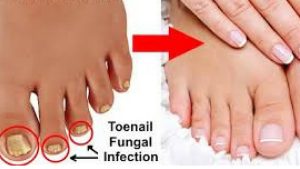Understanding Thick, Discolored Toenails Thick, discolored toenails can be both unsightly and uncomfortable, often causing embarrassment and self-consciousness. While they may seem like a minor cosmetic issue, they can sometimes indicate underlying health conditions or fungal infections that require attention. Understanding the causes and solutions for thick, discolored toenails is essential for maintaining foot health
Understanding Thick, Discolored Toenails
Thick, discolored toenails can be both unsightly and uncomfortable, often causing embarrassment and self-consciousness. While they may seem like a minor cosmetic issue, they can sometimes indicate underlying health conditions or fungal infections that require attention. Understanding the causes and solutions for thick, discolored toenails is essential for maintaining foot health and overall well-being.

Image by: yendex.com
Causes of Thick, Discolored Toenails
Fungal Infections
One of the most common causes of thick, discolored toenails is a fungal infection, such as onychomycosis. Fungi thrive in warm, moist environments like sweaty shoes and socks, leading to toenail discoloration, thickening, and brittleness.
Trauma or Injury
Repeated trauma or injury to the toenails, such as from ill-fitting shoes or vigorous physical activity, can damage the nail bed and cause thickening or discoloration over time.
Poor Foot Hygiene
Neglecting proper foot hygiene, such as failing to keep toenails clean and trimmed, can create an environment where fungi and bacteria flourish, leading to nail abnormalities.
Medical Conditions
Underlying medical conditions like diabetes, psoriasis, or circulation problems can affect nail health, leading to changes in color, texture, and thickness. Explore About (Tongue Health)

Image by: yendex.com
Solutions for Thick, Discolored Toenails
Topical Antifungal Treatments
Over-the-counter or prescription topical antifungal medications can effectively treat fungal nail infections, helping to clear up discoloration and promote nail renewal. These treatments typically come in the form of creams, ointments, or nail lacquers and should be applied consistently according to the manufacturer’s instructions.
Oral Antifungal Medications
In cases of severe or persistent fungal infections, oral antifungal medications prescribed by a healthcare professional may be necessary. These medications work from the inside out to combat the infection and promote the growth of healthy nails.
Proper Foot Hygiene Practices
Maintaining good foot hygiene is essential for preventing and treating thick, discolored toenails. This includes regularly washing and drying feet, keeping nails clean and trimmed, and wearing breathable socks and properly fitting shoes.
Protective Measures
To prevent further damage to toenails, it’s important to wear protective footwear in situations where injury or trauma is likely, such as during sports or physical labor. Choosing shoes with ample room in the toe box can also help alleviate pressure on the nails.
Dietary and Lifestyle Changes
Incorporating nutrient-rich foods into your diet, such as fruits, vegetables, lean proteins, and healthy fats, can support overall nail health. Additionally, maintaining a healthy weight, staying hydrated, and avoiding smoking can contribute to the health of your nails and feet.

Image by: yandex.com
Conclusion
Thick, discolored toenails can be a source of discomfort and self-consciousness, but they don’t have to be a permanent problem. By understanding the underlying causes and implementing appropriate solutions, you can renew the health and appearance of your nails, restoring confidence and comfort to your feet.
Don’t let thick, discolored toenails hold you back. Take proactive steps to address the issue and embrace nail renewal for optimal foot health and well-being.
















